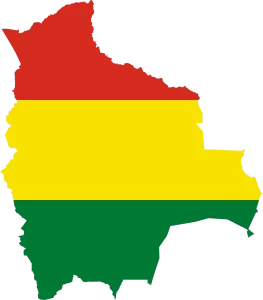Everything You Need To Know For Bolivia
Geographical Position And Climate Of Bolivia
Bolivia is a landlocked country situated in the central-western region of South America. It is bordered by Brazil to the north and east, Peru to the northwest, Chile to the southwest, Argentina and Paraguay to the south. The geographical diversity of Bolivia is immense; it ranges from the high peaks of the Andes in the west to the Eastern Lowlands, situated within the Amazon Basin.
Due to its diverse ecosystems and topography, Bolivia has multiple microclimates, ensuring that visitors can experience a wide range of weather conditions depending on where and when they travel within the country.
Brief History Of Bolivia
Bolivia has a rich history that dates back thousands of years. Before Spanish colonization, the region was part of the Inca Empire, one of the largest in pre-Columbian America. The Spanish conquest began in the 16th century, and Bolivia became a key part of the Spanish Empire, known for its silver mines.
After nearly three centuries under Spanish rule, Bolivia gained independence on August 6, 1825. The country was named after Simón Bolívar, a leader in the Spanish American wars of independence. The post-independence period was marked by political instability, economic woes, and territorial losses.
In the 20th century, Bolivia experienced periods of military rule and democratic governance. The latter half of the century saw significant social and political changes, including the nationalization of the tin industry and agrarian reform.
Today, Bolivia is a democratic republic, though it continues to face challenges such as political polarization and economic inequality. Despite this, it remains rich in cultural heritage and natural resources.
Religion
The predominant religion in Bolivia is Christianity. Catholics are the most numerous, followed by Protestants.
Language
Spanish is an official language. The indigenous languages Guarani and Aymara are also commonly spoken.

Bolivia is a captivating travel destination known for its stunning natural landscapes, rich indigenous cultures, and historical sites. Key attractions include the Salar de Uyuni, the world’s largest salt flat; Lake Titicaca, the highest navigable lake on Earth; and the capital city of La Paz, with its unique markets and moon-like topography of Valle de la Luna.
Places You Must Visit In Bolivia
Before You Visit Bolivia
Travel to Bolivia
By Air:
- International Flights: The main international airports are El Alto International Airport (LPB) near La Paz and Viru Viru International Airport (VVI) in Santa Cruz. Direct flights are available from major cities in Latin America, and connecting flights through hubs such as Miami, Madrid, or Buenos Aires serve travelers from North America, Europe, and beyond.
With car or bus:
- Bus: Neighboring countries like Peru, Chile, Argentina, and Brazil have bus services that connect to various Bolivian cities.
- Car: Travelers can drive into Bolivia via international highways, but they should be prepared for varying road conditions and ensure they have the necessary documentation.
By Water:
- Ferry/Lake Crossing: From Puno, Peru, tourists can take a ferry across Lake Titicaca to Copacabana in Bolivia.
Visas for Bolivia
Visa requirements for Bolivia vary depending on the traveler’s nationality:
Visa-Free:
- Citizens of some countries, including most South American and European Union nations, can enter Bolivia without a visa for short stays (usually up to 90 days).
Visa on Arrival:
- Some nationalities are eligible to obtain a visa upon arrival at major entry points like international airports and border crossings. This option typically allows for a stay of up to 30 days.
Tourist Visa:
- Other nationalities must apply for a tourist visa in advance through a Bolivian consulate or embassy. The tourist visa usually permits a stay of up to 30 days and can sometimes be extended within Bolivia.
Specific Requirements:
- The application process may require various documents, such as a passport valid for at least six months, proof of economic solvency, hotel reservations or an invitation letter, a return ticket, and sometimes a yellow fever vaccination certificate.
Best time to visit
The best time to visit Bolivia largely depends on the regions you plan to explore and the activities you’re interested in:
Highlands (including La Paz, Lake Titicaca, and the Uyuni Salt Flats):
- Dry Season (May to October): Clear skies and less rain make this the ideal time for trekking and visiting the salt flats. However, it can be quite cold, especially at night.
Amazon Basin:
- Dry Season (May to October): Less rainfall means fewer mosquitoes and easier access to wildlife viewing areas, although some waterways may be less navigable.
Yungas and Lowlands (including Santa Cruz):
- Shoulder Seasons (April to May and September to October): These periods offer a balance between the heavy rains of the wet season and the high heat of the dry season.
Overall, the dry season is generally considered the best time to visit most parts of Bolivia for outdoor activities and sightseeing. However, if you’re interested in cultural events like Carnaval or the Oruro Carnival, you’ll want to visit during the specific dates these festivals take place, usually in February or March.
Important Information
Capital – Sucre
Territory – 1,098,581 km2
Currency – Boliviano
Time Zone – UTC-4 (BOT)
Population – 12,186,079
Demonym – Bolivian
